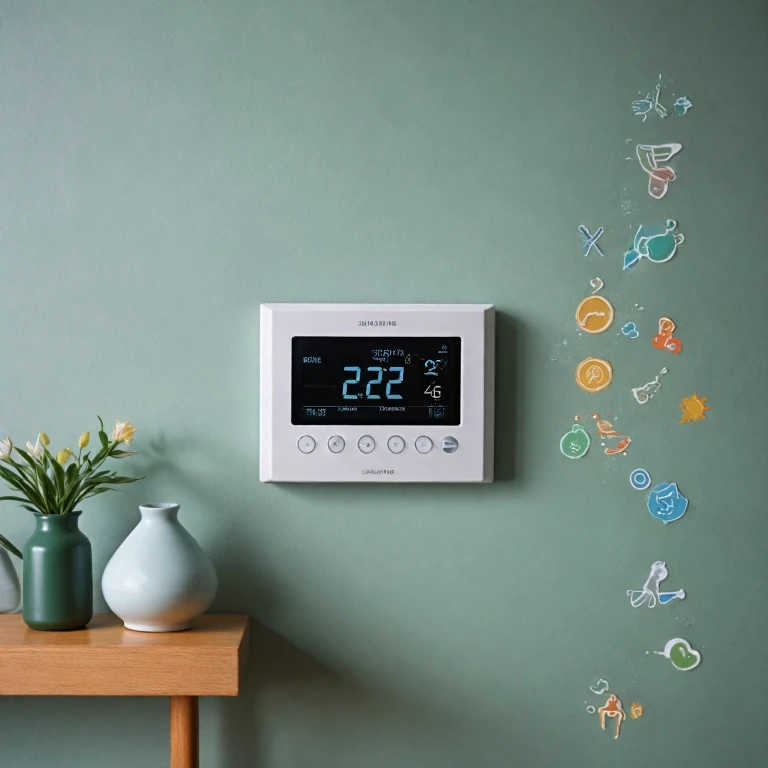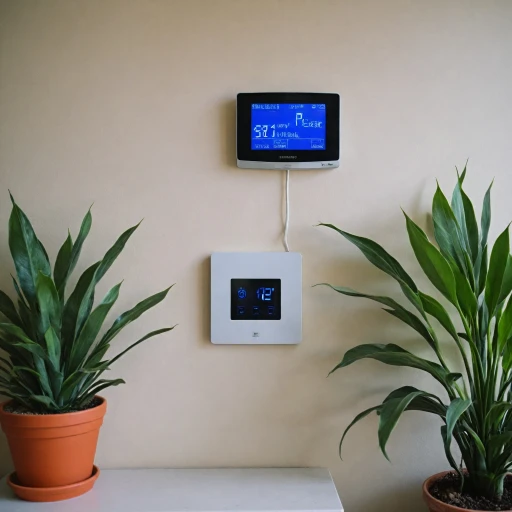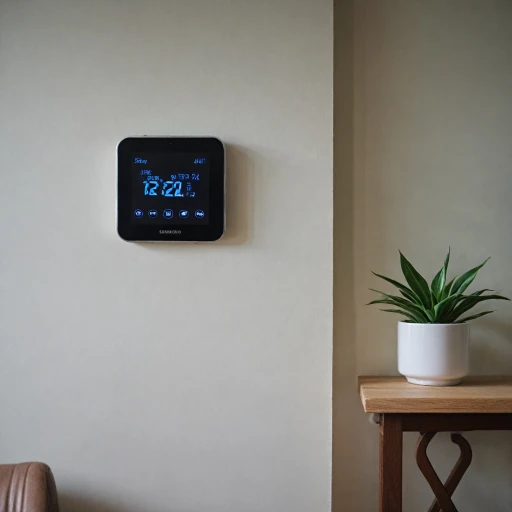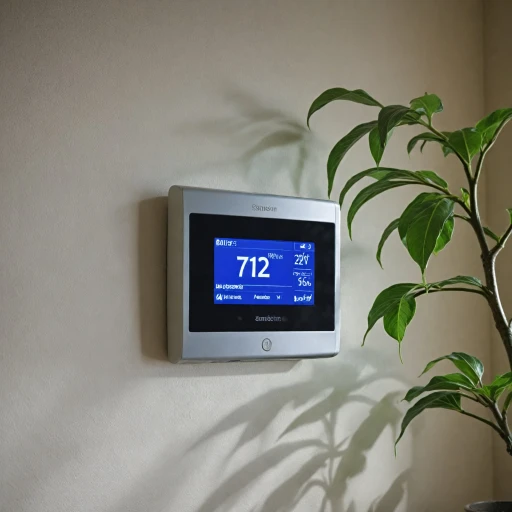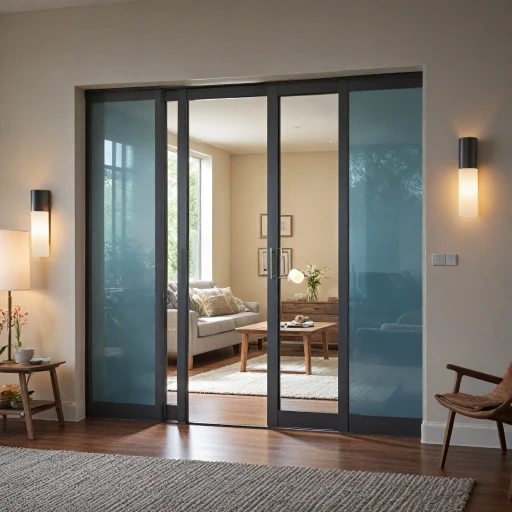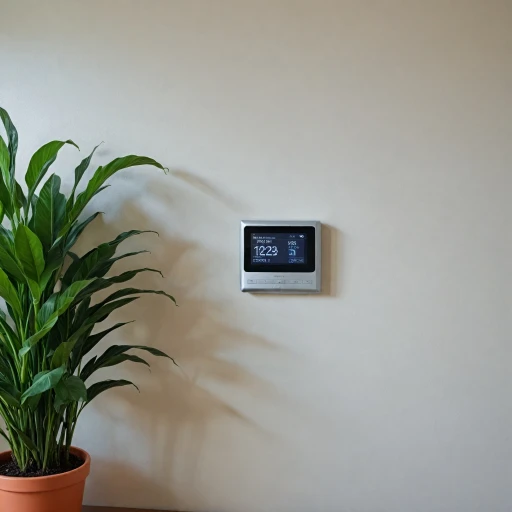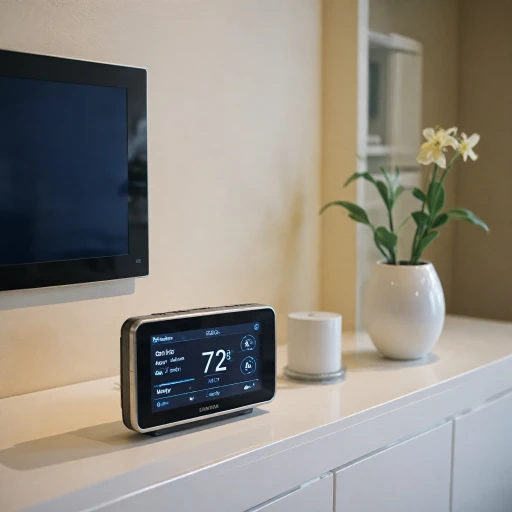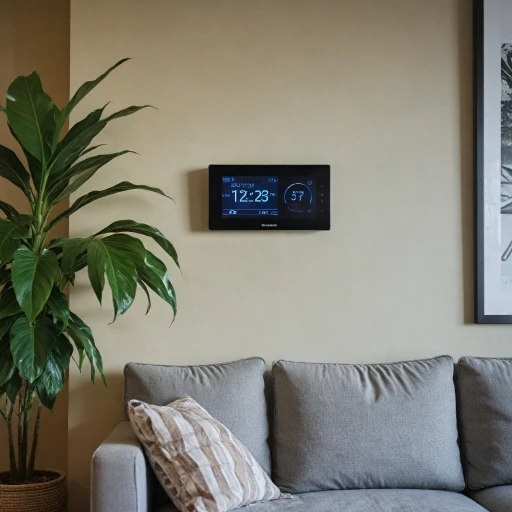
How the Nest Thermostat Learns Your Preferences
Adapting to Your Schedule
The Nest Thermostat distinguishes itself with its unique ability to learn your preferences over time. By observing your daily routines, it smartly adjusts the temperature settings to suit your needs. Whether it’s the cool mornings in summer or the cozy warmth needed on winter nights, this smart thermostat adapts with impressive precision.Automatic Adjustments
One of the standout features is the Nest Thermostat's capability to automatically adjust to energy-saving settings when it identifies that your home is unoccupied. This function not only ensures comfort but also contributes significantly to reducing energy waste, which in turn results in noticeable cost savings on utility bills.Insights and Reports
The power of the Nest Thermostat is enhanced with detailed reports offering insights into your energy consumption patterns. The capability of providing easy-to-understand reports helps you stay informed actively on how adjustments impact energy use, thus empowering you to make informed decisions.Transforming Traditional Appliances
Furthermore, with features that include compatibility with HVAC systems, heat pumps, and even stage heating, the Nest transforms traditional heating and cooling systems into something much more efficient. Designed for easy installation, it comes with a trim kit that allows seamless integration into your existing setup. By leveraging these learning capabilities, the Google Nest Thermostat becomes not just another device but an intuitive assistant that fits effortlessly into your lifestyle, turning comfort and efficiency into a personalized experience. This innovative approach can be further explored in Exploring the Benefits of the Bryant Evolution Thermostat, offering a broader perspective on how smart thermostats are reshaping home climate control.Energy Efficiency and Cost Savings
Maximizing Energy Savings with the Nest Thermostat
The ability of the Nest thermostat to create significant energy efficiency and cost savings is often a driving factor for those considering buying it. It learns your temperature preferences over time and intelligently adjusts the heating and cooling in your home. This targeted energy management allows for reduced power consumption without sacrificing comfort. High performance doesn't have to mean high utility bills. Here's how the Nest thermostat can help lower your energy costs:- Automatic Scheduling: By analyzing your usage patterns, it sets up an efficient heating and cooling schedule automatically. This scheduling helps your HVAC system operate more efficiently.
- Energy Reports: Utilize the energy reports provided by Google to understand your energy usage. This insight is available right on your Google Nest app and helps you make informed decisions on how to further optimize your thermostat settings.
- Compatibility with HVAC Systems: The thermostat is compatible with a diverse range of systems, from stage heating to heat pumps. This compatibility ensures that most users can install their thermostats seamlessly, taking advantage of energy-saving features regardless of the setup.
- Eco Temperature Setting: When you're not home, the Nest can adjust to Eco Temperatures automatically, maintaining temperature settings that save energy.
Integration with Smart Home Systems
Connecting Smart Home Devices with Your Nest Thermostat
Integrating the Nest thermostat into your smart home ecosystem offers a seamless experience, leveraging its compatibility with various devices. As a Google product, the Nest works efficiently with other Google devices, enhancing your home's intelligence and comfort levels.
The Nest thermostat enables control through the Google app, allowing you to manage temperature settings even when you're away from home. This remote access feature, made possible via a wifi thermostat setup, ensures that the power to adjust heating and cooling is always at your fingertips.
- Compatibility: Designed to integrate with a wide range of HVAC systems, including different wire stages in heating and air conditioning setups, the Nest is suitable for most home configurations.
- Easy Installation: Accompanied by a trim kit, the product ensures a smooth installation process, making it easy for users to replace their old thermostats with this smart thermostat.
- Energy Savings: By utilizing the various energy-saving features, users can significantly reduce their power consumption, as detailed in customer reviews and expert reports.
- Expanded Connectivity: The thermostat’s compatibility extends beyond just Google's ecosystem; it can also work with various other smart home platforms for an integrated home automation experience.
The flexibility and convenience offered by the integration capabilities of the Nest make it a valuable addition to any modern household. Plus, with benefits like free shipping on shipping orders, it's accessible to a wide audience looking to upgrade their homes with smart technology. For those interested in further enhancing their smart home setup, consider exploring enhancing your gas fireplace with a smart thermostat for additional comfort and control.
User Experience and Interface
Navigating the Interface
The Nest thermostat offers a sleek and user-friendly interface that appeals to tech-savvy individuals and those who prefer simplicity. Its round design, available in a variety of colors including white, integrates well with different home decors. The display is bright and easy to read, showing essential information like the current temperature and schedule.Control Via the Google App
Managing your Nest thermostat is simplified through the Google Home app, where users can adjust temperature settings, monitor energy usage, and set schedules. The Google app allows you to control the device remotely, providing convenience whether you're at home or away. This connects seamlessly to your home WiFi, making it possible to tweak settings from your smartphone.Effortless Installation and Integration
Installation of the Nest thermostat is straightforward, and Google provides ample guidance to ensure users can manage the process on their own. Included in the package is a trim kit, which helps create a neat installation even if the previous thermostat left marks. Additionally, the Nest system is compatible with most HVAC systems, reducing concerns about compatibility. For homes with more complex heating and cooling setups, like stage heating or heat pumps, Google offers detailed support through their help center.Customer-Driven Product Evolution
Valued for its "easy install" reputation, the Nest thermostat continues to evolve based on customer feedback. The product receives updates that refine its learning algorithms and address user interface experiences. The regular software updates ensure the thermostat is always up-to-date with the latest features and efficiency improvements, enhancing user experience over time.Reading Customer Reviews
For prospective buyers, customer reviews can be insightful. Many users appreciate the energy-saving capabilities, the attractive price point, and the easy installation process. It’s also frequently highlighted how the Nest thermostat helps to effortlessly manage temperature variations through different seasons, optimizing home comfort and saving energy. Shipping options such as free shipping on orders are added advantages that make the smart thermostat an appealing choice. Overall, Nest's commitment to providing a user-friendly, efficient, and sleek thermostat makes it a powerful tool for modern households looking to combine technology with energy efficiency.Challenges and Considerations
Overcoming Challenges in Adapting to Smart Thermostats
Understanding the challenges and considerations when transitioning to a Google Nest or any other smart thermostat is crucial for prospective users. Achieving seamless integration with smart home systems can be complex, especially when dealing with varied HVAC configurations. Here are some common challenges:- Compatibility Concerns: It's essential to verify if your HVAC system is compatible with the Nest thermostat. Some systems, especially older ones, might require additional components like a trim kit or even a professional to handle the installation.
- Installation Hurdles: While many users find the installation process easy, thanks to the detailed setup instructions, there are instances where wiring complexities arise. Users might encounter issues particularly when connecting with multi-stage heating and cooling, or when dealing with heat pumps.
- User Interface Learning Curve: Although the Nest thermostat is designed for user-friendliness, some users might find the transition from traditional thermostats to smart displays challenging. The learning curve may include familiarizing oneself with the Google app or exploring the help center for efficient control.
- Customer Reviews and Feedback: Paying attention to customer reviews can provide insight into potential issues. Reports indicate that some users face difficulties with maintaining consistent temperature regulation or efficient energy usage, which might stem from improper settings or misinterpretation of interface metrics.
